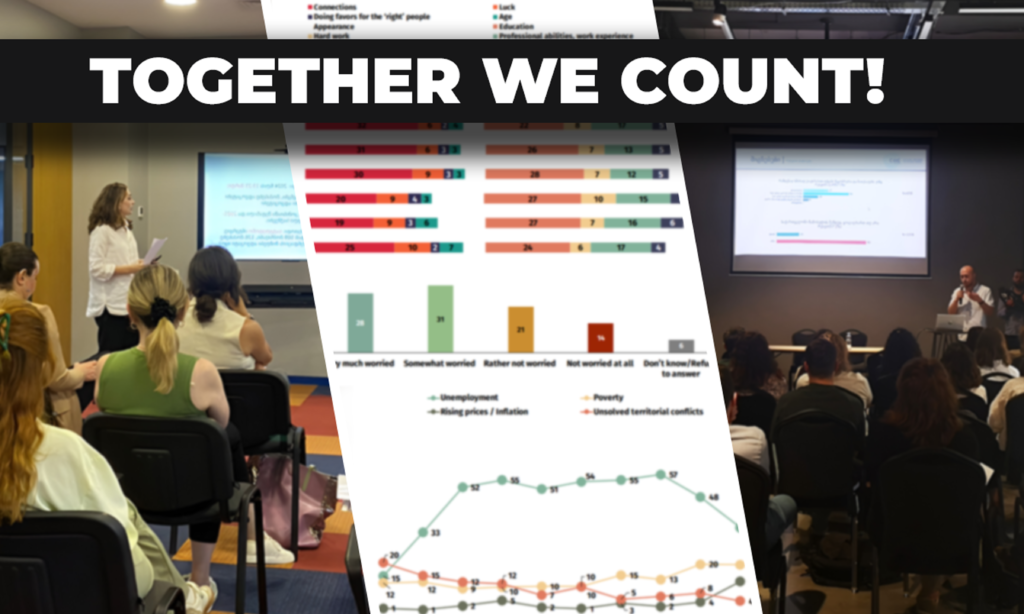[Note: This article was written by Tsisana Khundadze. It was originally published in partnership with OC Media on the Caucasus Data Blog. The views expressed in this article do not represent the views of CRRC Georgia, the National Democratic Institute, or any related entity.]
An NDI and CRRC survey conducted in June 2020 asked questions about people’s beliefs about the origins and spread of coronavirus. The data suggest that while a majority of the population does not believe in common disinformation messages such as a relation between 5G technology and the spread of the coronavirus, only a small portion thinks that coronavirus came about naturally.
Most people see some kind of human footprint in the creation and spread of coronavirus.
According to the survey, around half of the population thinks that coronavirus was developed in a lab. Specifically, 30% thinks that it was developed in a lab and was spread intentionally and 22% believes it was made in a lab and spread accidentally.
Only 13% of Georgians say coronavirus came about naturally, and around a third (32%) of the population is uncertain about the origins of this virus.
A small portion (3%) even think that coronavirus does not really exist.
Besides this question, respondents were asked their opinion on the relation between the spread of coronavirus and 5G internet infrastructure, one of the most widespread pieces of misinformation that spread around the world.
While only 10% said they think that 5G internet infrastructure is linked to the spread of coronavirus, almost half said they disagreed with this notion, and around a third of Georgians don’t know whether 5G and coronavirus are related.
This shows that even though only a small portion of people believe in a link between 5G and COVID-19, almost half are uncertain, or at least not clear, whether this is misinformation.
To better understand beliefs about the origins of coronavirus, a regression model was constructed. According to the model, men are 1.3 times more likely to say that coronavirus was developed in a lab and spread intentionally, while women are 1.4 times more likely to think that it was developed in a lab but spread accidentally.
Moreover, the more household items a person owns (a proxy for wealth), the more likely that person is to say that coronavirus was developed in a lab and spread accidentally and less likely to say it was spread intentionally.
Those in the worst economic situation are 1.6 times more likely to say that coronavirus was developed in a lab and spread intentionally than people who score highest on the ownership index. The latter are almost 3 (2.8) times more likely to think it was spread accidentally than the former.
However, no differences were observed between people in different age groups, settlement types, with different levels of education, those using social networks more or less often, with different employment statuses, or attending religious services at different rates.
Note: This and the following chart was generated from a regression model. The model includes sex (male, female), age group (18-34, 35-54, 55+), settlement type (capital, urban, rural), education (secondary or lower, secondary technical, tertiary), frequency of using social media (everyday, once a week or month, less often or never), employment status (employed, not employed), frequency of attending religious services (at least once a month, less often or never), and an additive index of ownership of different items, a common proxy for wealth. Besides demographic characteristics, social media usage was added into the regression model, because social media was named as the main source of information by 41% of the population. Religious attendance was included in the model, because, around Easter, it became clear that people who are more religious perceived the possibility of the spread of the coronavirus in a different way in Georgia.
As for the relation between the spread of coronavirus and 5G internet infrastructure, people living in rural areas are around 1.5 times more likely to think that 5G is related to the spread of coronavirus compared to people who live in Tbilisi or other urban areas.
Similarly, people with higher than secondary education are 1.9 times less likely to think that 5G is related to spread of coronavirus, compared to people with lower levels of education. Yet, people of different genders, ages, employment statuses, and economic situations and those attending religious services and using social media more or less often hold similar views on the relation between 5G technology and coronavirus.
Only a small portion of Georgia’s population actually believes that 5G infrastructure is related to the spread of coronavirus, though people living in rural areas and those with lower levels of education agree with this notion more.
A solid half of the population thinks that coronavirus did not occur naturally and was developed in a lab. This part of the population is further split roughly in half in their opinion on the nature of spread. Men and people with worse economic situations are slightly more likely to think that coronavirus was developed in a lab and spread intentionally, compared to women and people with better economic situations, who in turn are more likely to think it was developed in a lab and spread accidentally.
For more data on people’s opinion and attitudes on issues around coronavirus see the dataset on CRRC’s online analysis tool.






